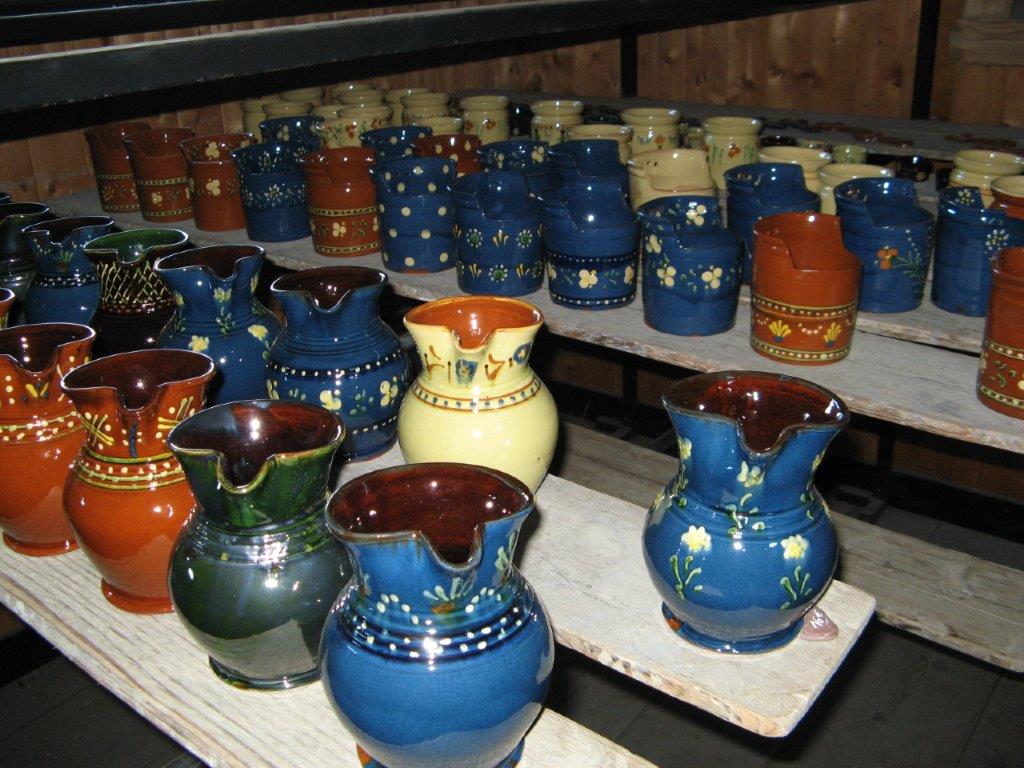The pottery of Marnaz is an essential part of the Marnerot heritage. Opened in the XVIIIrd century, it closed its doors in 2010. But many are those who jealously keep in their homes the works designed in this magical place. A little history of this pottery in the service of a popular art part of the purest Savoyard tradition.
Hands in the marl

Every summer vacation was the same. The tatan wanted to go to the pottery of Marnaz to plunge her eyes back into the intense blues and deep greens adorned with traditional Savoyard decorations.
If today the pottery is closed, no one has forgotten it. The name of Marnaz is closely linked to the land. Marne means land: it is rich on the banks of the Arve. The potters of yesterday and today have therefore used it as a raw material.
This was the case when pottery opened in the XNUMXth century.rd century and it was a family affair.
Cécile Coronel-Guyot, the mother, started at the age of 14 and retired 80 years later: enough to leave a whole roundabout of yellow vests speechless.
She took care of the realization of the patterns with the barolet. His son, Bernard Coronel, turned the last pieces of pottery.
In short circuit!
Adept of the short circuit before the hour, the family carried out all the stages locally. The clay was quarried near Marnaz. It was turned: bowls, pitchers, pie plates, egg cup ...

Once the first firing had been done, the slip was affixed: a uniform layer was first applied, then the patterns were made with a barolet, a kind of pear filled with slip.
Finally, a transparent enamel covered the whole to give shine to the pieces.
If this family of artist-craftsmen was discreet, it enjoyed an international reputation: it received the gold medal for the quality of the decoration at the international exhibition in Paris in 1937.
The marnerot bowls also traveled as part of an international exhibition called “Thousand and One Bowls”, under the patronage of UNESCO.
![]()
Credits Jacques Nicole ![]()
Credits Jacques Nicole
We would like to especially thank Mr. Jacques Nicole for allowing us to use his photographs and invite you to discover his report on Poterie Guyot here !



